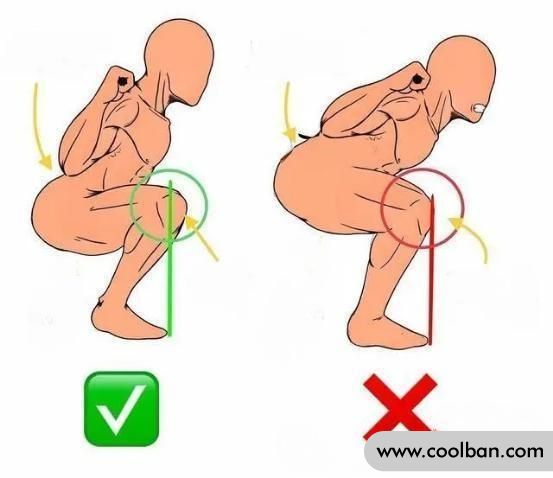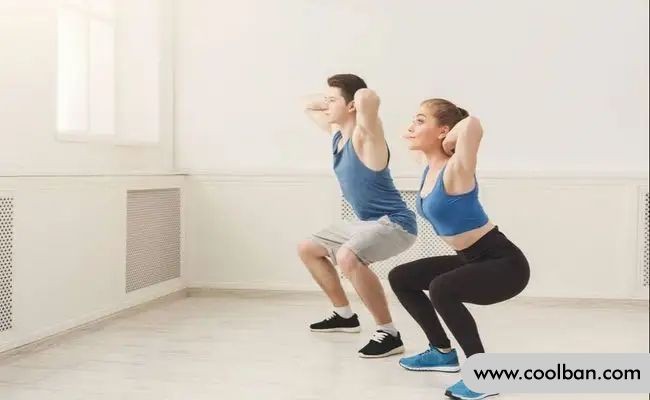How do squats damage the knee joint?
Every time we talk about squatting, we hear the most words "squatting will damage the knees". So, can squats damage your knees? Of course, it's not just the knees that can be damaged by incorrect squat position, and the right squat can bring us all kinds of benefits, including health.
Then again, how did squatting damage the knees?
The answer is that the action is incorrect, for example:
First: Non-standard movements, wrong movement patterns or habitual movement patterns lead to excessive pressure on the knees
The squat is a hip-knee-based exercise. During movement, hip flexion and knee flexion are accomplished almost simultaneously. To get the hang of hip flexion and knee flexion, at the beginning of the exercise, we'll separate the hip flexion from the knee flexion. That is, bend your hips (sit your hips back), then bend your knees and squat down. You can do it together when you are familiar with the movements.
However, in many cases, when we squat, we ignore the flexion of the hips and directly use the knees to squat, so that most of the pressure on the hip and leg muscles is transferred to the knees. If the knee joint is overstressed and injured, bending the knee directly and squatting will also cause the center of gravity to move forward, and unconsciously stand on tiptoe, causing greater pressure on the knee.
Therefore, in the process of squatting, what we need to do is to first understand the basic essentials of the movement, become familiar with the movement pattern, and then try the movement to allow ourselves to complete the movement in the correct way.

Second: Too much emphasis on adjusting the essentials of action, while ignoring its own characteristics
The action specification is universal, but individual differences are not taken into account, so when we know the basic essentials of squatting, we must let ourselves complete it in a comfortable position, such as the direction of the toes, we will say that the toes are slightly outward, But the specific degree of outward facing requires you to try to explore in the action to find a suitable angle.
With your feet shoulder-width apart, keep your lower back straight and engage your core. While keeping your back straight, bend your hips and knees and start squatting until your thighs are parallel to the ground or slightly lower, then stand up until your body is upright, keeping your body steady throughout, keeping your knees in the same direction as your toes, don't get up Lock your knees.
Also, there's the question of whether the knee should go over the toes. In some movement codes, we always see that the knees should not go over the toes. But the point of this sentence should be to let the center of gravity fall on the soles of the feet. Keeping your knees below your toes can lead to an unstable center of gravity and falls, or your back stretches too far forward and puts too much pressure on your back. Because for some friends who are taller or have longer calves, if they want to squat to a certain extent, their knees will definitely exceed their toes. Therefore, it is not a mistake for the knees to exceed the toes when squatting, but a normal phenomenon.

Third: Your own ability is not enough to complete the squat, but you still try to do it
Although the squat is a familiar movement, it is not easy to perform. In addition to the many details of the action, the foundation itself is also a very important issue. E.g:
Hip flexibility affects the range of hip flexion, ankle flexibility affects squat range, core strength affects body stability, and hip and leg muscle strength affects knee orientation. For example, the problem of knee flexion, in addition to habitual flexion, is also caused by the weakness of the gluteal muscles and leg muscles, and the flexion of the knee can cause the knee joint to rotate incorrectly and cause injury.
Also, not all squats are for everyone. If your knee is injured, it means that it is not suitable for squatting. Don't do it reluctantly.
Therefore, if our ability is insufficient, we must first focus on improving our ability, and then try. For friends who are not suitable for squatting, we must consider using other movements to achieve our goal, because no matter how good one movement is, it is not omnipotent. Only when the squat is right for us and we have the ability to do it will we stick with it and get some benefit from it.
